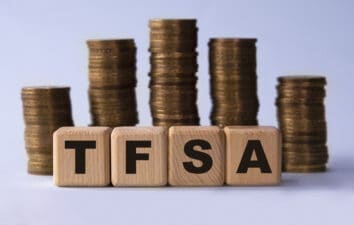Dear Fellow Fools,
When Yale University’s Robert Shiller speaks, Fools tend to listen. Dr. Shiller is perhaps best known for his work on the rise of the dot-coms in the late 1990s/early 2000s, and the U.S. real estate market in the mid-portion of the last decade. He correctly labelled them bubbles well before it was apparent to the masses. This week, Dr. Shiller was one of three recipients of the Nobel Prize in Economic Sciences.
Standing on the shoulders of giants is one of the best ways to improve and evolve as an investor. Therefore, in honour of his Nobel Prize, this week’s Take Stock features five incredible insights from Dr. Shiller’s work.
1. On thinking differently
Award-winning Fool.com columnist Morgan Housel interviewed Dr. Shiller at his Yale office back in 2011. When asked why so many people missed the inflating housing bubble in the U.S. toward the end of the last decade, Dr. Shiller replied:
“We have to always reflect, and maybe this is a Motley Fool-type theme; we have to always reflect that if you swim with the current, you will be thinking the same things as everyone else. You have to recognize that your own thoughts are not your own thoughts. They kind of filtered and percolated in from other people. It all seems like my own common sense, but it’s just what everybody is saying now.”
2. On real estate as an investment
This insight is especially poignant, given the current state of Canadian housing:
“Home prices declined for the first half of the 20th century in real [inflation-adjusted] terms. Economists discussed that back then. Why are they going down? The conclusion, if there was any consensus in say 1950, was, of course home prices go down. There’s technical progress. They are a manufactured good. Back in 1900, homes were handmade, you know, craftsmen. But now, in 1950, we can get all kinds of power tools and prefab, and they were just better in 1950 than we were in 1900, so of course they will go down.
“From that frame of reference, I think maybe that’s exactly what we should expect, too. It’s just a manufactured good, and progress is always happening. And on top of that progress, there’s the outmoding, the out-of-style factor. So what kind of houses will they be building in 20 years? They may have lots of new amenities. They will be computerized or something in some way that we can’t anticipate now. So people won’t want these old homes. To me, the idea that buying a home is such a great idea is just wrong. They may very well decline for the next 30 years in real terms.”
3. On short-term thinking
Dr. Shiller told Morgan that “there’s too much faith in analysis of short-term data. You see some pattern, and you can do a statistical test and prove that will prove that it is significant or passes the smell test to a statistician. But the problem is, the world is always changing. It’s not a stable thing. The underlying human parameters may be stable, but you can see that there is institutional and cultural evolution, and it’s not something that you can quantify.”
That’s why in our evaluation of companies, we Fools always look at the long-term picture!
4. On using the past to gauge the future
My own admiration for Dr. Shiller traces back to his emphasis on the importance of understanding financial history.
Shiller has developed a massive treasure trove of historical data, which he’s put to good use to help him make his famous “bubble” determinations. One data set pertains to historical stock market information; the other to housing. Though they’re U.S.-centric, they’re helpful nonetheless (and free — see here and here).
There are two items in particular that are helpful for Foolish investors.
The first is known in investor circles as, simply, the “Shiller P/E”. It’s better known as the CAPE, or “Cyclically Adjusted Price Earnings multiple”.
The CAPE is an interesting take on the more traditional price/earnings multiple. Instead of using calendar year or trailing-12-month figures to represent the broad market’s earnings, the CAPE uses a 10-year average earnings figure. Dr. Shiller has argued that the 10-year average helps smooth out the highs and lows that an economy brings, and provides a more normalized representation of the market’s earnings power.
We can use the CAPE to gauge the market’s valuation (again, we’re talking U.S. here, but it’s still applicable). A higher-than-average CAPE might indicate that the U.S. market is overvalued, and vice-versa.
Today, the CAPE sits at 23.5, versus the long-term historical average of 16.5 — indicating an overvalued U.S. market. (Shiller’s historical data dates back to 1871.)
Source: Robert Shiller.
Based on this information, history says that our expectations for future market returns should be tempered. The more this CAPE number has historically deviated from its long-term average on the upside, the more likely the market is to achieve a negative return in subsequent years.
5. On using the past to gauge the future, part 2
The other insight gleaned from Dr. Shiller’s historical data is the long-term trend for interest rates.
The interest rate chart below is simply a plot of the long-term trajectory of the 10-year U.S. Treasury Bond yield.
Source: Robert Shiller.
At some point, based on historical precedent, interest rates really only have one way to go. That’s all there is to it!
Fools should position their portfolios accordingly.
Final Foolish Thoughts
Show me a great investor and I’ll show you somebody that has learned from the insights of other great investors, businesspeople, and academics. Whether it’s a quote that sticks with you or a new tool, rarely will you not come out ahead after leveraging the brilliant minds that exist.
Be sure to follow us on Twitter and Facebook for the latest in Foolish investing.
‘Til next time … happy investing and Fool on!
Sincerely,
Iain Butler
Senior Investment Advisor
The Motley Fool Canada









